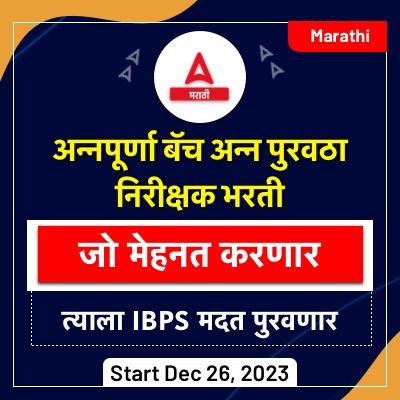Leader of Opposition
(The Hindu, 28/06/24)
Congress leader Rahul Gandhi is Leader of Opposition (LoP) in the 18th Lok Sabha, a position that lay vacant for 10 years because no party had numbers equalling a tenth of the strength of the House.
Who is leader of Opposition (LoP)?
- The LoP is the parliamentary chairperson of the largest political party/ coalition in the Lok Sabha that is not in government.
- It was officially described in the Salary and Allowances of Leaders of Opposition in Parliament Act 1977.
- According to a conventional understanding, in order to get the post of Leader of Opposition a party must have at least 10% of MPs in the House.
- Debate over numerical strength:
- There is no such rule, which requires a party to have at least 10% of the members of the House for recognising someone as the Leader of the Opposition.
- Before the BJP in 2014 and 2019, the Congress (having 415 members in Lok Sabha) in 1984 denied TDP (with 30 MPs) the post of Leader of Opposition, on the basis of the above mysterious rule.
- Salary and sumptuary allowances: S/he shall be entitled to receive a salary and allowances as are specified in the Salary, Allowances and Pension of Members of Parliament Act 1954.
What is the importance of Having an LoP?
- Parliamentary Debates: The LoP leads the opposition in parliamentary debates, presenting alternative policies and viewpoints, thereby enriching the discourse.
- Representation of Diverse Opinions: The LoP ensures that the viewpoints of the opposition are heard and considered, fostering a more inclusive decision-making process.
- Appointment of Key Positions: The LoP is a member of various important committees, such as the selection committee for appointments to institutions like the Central Vigilance Commission (CVC), the Central Information Commission (CIC), and the Lokpal.
- Checks and Balances: The LoP plays a critical role in maintaining a check on the government, ensuring accountability and transparency in its functioning.
What are the Concerns and Challenges?
- Lack of official recognition if no party meets the 10% seat criterion
- In a scenario where the ruling party has a significant majority, the opposition and its leader may find themselves marginalized, with limited influence over legislative processes.
- Potential for obstructionism rather than constructive opposition
- Balancing party interests with national interests
- In a multi-party system like India, forming a consensus among opposition parties to elect an LoP can be challenging.
- Despite the significance of the role, the LoP lacks any formal executive power
Can you answer the following questions?
“The Leader of the Opposition is essential for a robust parliamentary democracy.” Discuss this statement in the context of the Indian political system, highlighting both the utility and the challenges associated with the position.
Non-communicable diseases
(Indian Express, 28/06/24)
New data published in the Lancet Global Health shows an alarming 57% women and 42% men in India fail to meet the World Health Organisation’s guidelines for sufficient physical activity.
If this trend continues, it is estimated that by 2030, about 60 per cent of India’s adult population would be at risk of diseases like cardiovascular ailments, diabetes and even dementia and cancer of the breast and colon.
What are the reasons for rise of non-communicable diseases?
- Unhealthy Diet: Increased consumption of processed foods high in sugar, salt, and unhealthy fats contributes to obesity, diabetes, and cardiovascular diseases.
- Sedentary Lifestyle: Lack of physical activity due to urbanization and changing work patterns increases the risk of various NCDs.
- Tobacco and Alcohol Use: Widespread tobacco and alcohol consumption are major risk factors for cancer, cardiovascular diseases, and respiratory problems
- Urbanization: Rapid unplanned urbanization leads to lifestyle changes, stress, and exposure to environmental pollutants, contributing to NCDs.
- Stress and Mental Health: Increased stress levels, coupled with inadequate mental health support, contribute to lifestyle-related diseases.
- Social Censure: Social disapproval, particularly among women and girls, can act as a barrier to physical activity and healthy behaviors outside. The patriarchal belief that household chores for women are sufficient exercise can also lead to a lack of dedicated physical activity.
- Inadequate Infrastructure: Lack of safe and accessible spaces for physical activity, such as parks, walking trails, and sports facilities, discourages exercise. Also, Broken pavements, open sewers, and erratic traffic create additional obstacles to physical activity
- Pollution: Exposure to high levels of air & water pollution increases the risk of respiratory diseases, cardiovascular diseases, and cancer.
- Inadequate Health Literacy: Lack of awareness and education about healthy lifestyle choices and preventive measures contribute to the rising burden of NCDs.
What measures can government take to tackle this challenge of NCDs?
- Promote Healthy Lifestyles:
- Implement public awareness campaigns to educate people about the importance of a healthy diet, regular exercise, and avoiding tobacco and alcohol.
- Encourage the consumption of fresh fruits and vegetables by making them more affordable and accessible.
- Develop infrastructure for physical activity, such as parks, walking trails, and sports facilities.
- Regulate Unhealthy Products:
- Implement stricter regulations on the marketing and sale of unhealthy foods and beverages, particularly to children.
- Increase taxes on tobacco and alcohol products to discourage their consumption.
- Improve Healthcare Infrastructure:
- Increase access to affordable and quality healthcare services, especially in rural areas.
- Strengthen primary healthcare to focus on early detection and prevention of NCDs.
- Train healthcare professionals in the diagnosis and management of NCDs.
- Address Environmental Factors:
- Implement stricter regulations to control air and water pollution.
- Promote clean energy sources and sustainable transportation.
- Create healthier workplaces by enforcing safety regulations and providing protective gear.
- Conduct Research and Surveillance:
- Invest in research to better understand the risk factors and causes of NCDs in the Indian context.
- Conduct regular surveillance to monitor the prevalence and trends of NCDs.
- Use data to inform policies and interventions.
Can you answer the following question?
The rising burden of non-communicable diseases in India is not merely a medical issue but also a reflection of deep-rooted social and cultural norms. Examine this statement, citing specific examples, and suggest measures to address the socio-cultural barriers to adopting healthier lifestyles.
मासिक चालू घडामोडींवर महत्त्वपूर्ण वनलायनर प्रश्न-उत्तरे PDF – मे 2024
महाराष्ट्रातील सर्व स्पर्धा परीक्षांसाठी ऑनलाईन क्लास, व्हिडिओ कोर्स, टेस्ट सिरीज, पुस्तके आणि इतर अभ्यास साहित्य खाली दिलेल्या लिंक वर क्लिक करून मिळावा.
अड्डा 247 मराठीचे युट्युब चॅनल
अड्डा 247 मराठी अँप | अड्डा 247 मराठी टेलिग्राम ग्रुप
महाराष्ट्र महापॅक










